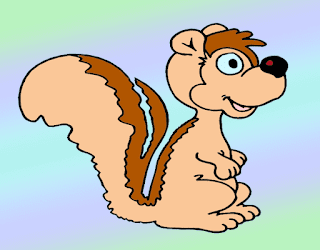Introduction
Drawing is a creative outlet that licenses us to grant our innovative mind and bring our examinations. Whether you're a beginner or a experienced artist, prevailing at drawing can be a reimbursing experience. In this step by step educational activity, we'll investigate how to draw a skunk, an enchanting animal known for its undeniable appearance and outstanding markings.
Reference Image: Find a clear reference image of a skunk to guide your drawing.
Reference Image: Find a clear reference image of a skunk to guide your drawing.
Step 1: Gather Your Materials
Before you begin drawing, it's essential to gather all the necessary materials. You'll need:
- Paper: Pick a great drawing paper that can endure different drawing methods.
- Pencils: Get a scope of pencils, from H (hard) to B (delicate), for outlining and shadding.
- Eraser: Pick a manipulated eraser for exact redresses.
Step 2: Sketch the Basic Shapes
Begin by delicately outlining the fundamental shapes that structure the body of the skunk. Start with an oval for the body and a more modest circle for the head. Add two more modest ovals for the ears and a long, bended line for the tail. These underlying shapes will act as a system for your skunk drawing.
Step 3: Define the Features
When you have the fundamental shapes set up, begin characterizing the highlights of the skunk. Add subtleties like the eyes, nose, mouth, and ears. Skunks have little, round eyes, a three-sided formed nose, and adjusted ears. Focus on the extents and situation of these highlights to precisely catch the resemblance of a skunk.
Step 4: Add Fur Texture
Then, center around adding surface to the skunk's fur. Skunks have short, thick fur with particular markings. Utilize short, covering lines to make the deception of fur surface. Give close consideration to the heading of the fur and the examples of the markings. Begin with light strain and steadily develop layers of concealing to accomplish profundity and aspect.
Step 5: Define the Markings
One of the most particular elements of a skunk is its highly contrasting markings. Utilize your reference picture to diagram and fill in these markings with your pencil cautiously. Begin with the dark markings, utilizing a more obscure pencil or expanding strain to make intense lines. Then, at that point, fill in the white regions with a lighter pencil or leave them clear to make contrast.Step 6: Refine and Shade
Whenever you've illustrated the markings, find opportunity to refine your attracting and add concealing to make profundity and aspect. Utilize a mixing stump or your fingers to mix the concealing without a hitch and make a consistent change among light and shadow. Focus on the light source in your reference picture and shade as needs be to make a practical appearance.Step 7: Final Details and Touches
As you close to the end, add any last subtleties and contacts to improve your skunk drawing. This might incorporate adding features to the eyes and nose, refining the state of the ears, or adding inconspicuous surfaces to the fur. Make your time and stride back intermittently to survey your drawing and make any essential changes.Step 8: Sign and Display Your Artwork
Whenever you're happy with your skunk drawing, remember to sign your name in the corner to guarantee it as your own. Think about outlining your work of art or imparting it to others to exhibit your ability and inventiveness.

Conclusion:
Skunk Darwing can be a fun and compensating experience, permitting you to investigate your imaginative abilities and catch the magnificence of this entrancing animal. By following this bit by bit guide and rehearsing consistently, you'll have the option to become amazing at skunk drawing and make shocking work of art that mirrors your innovativeness and energy for drawing.
Always Read our Latest Drawing tutorials.

